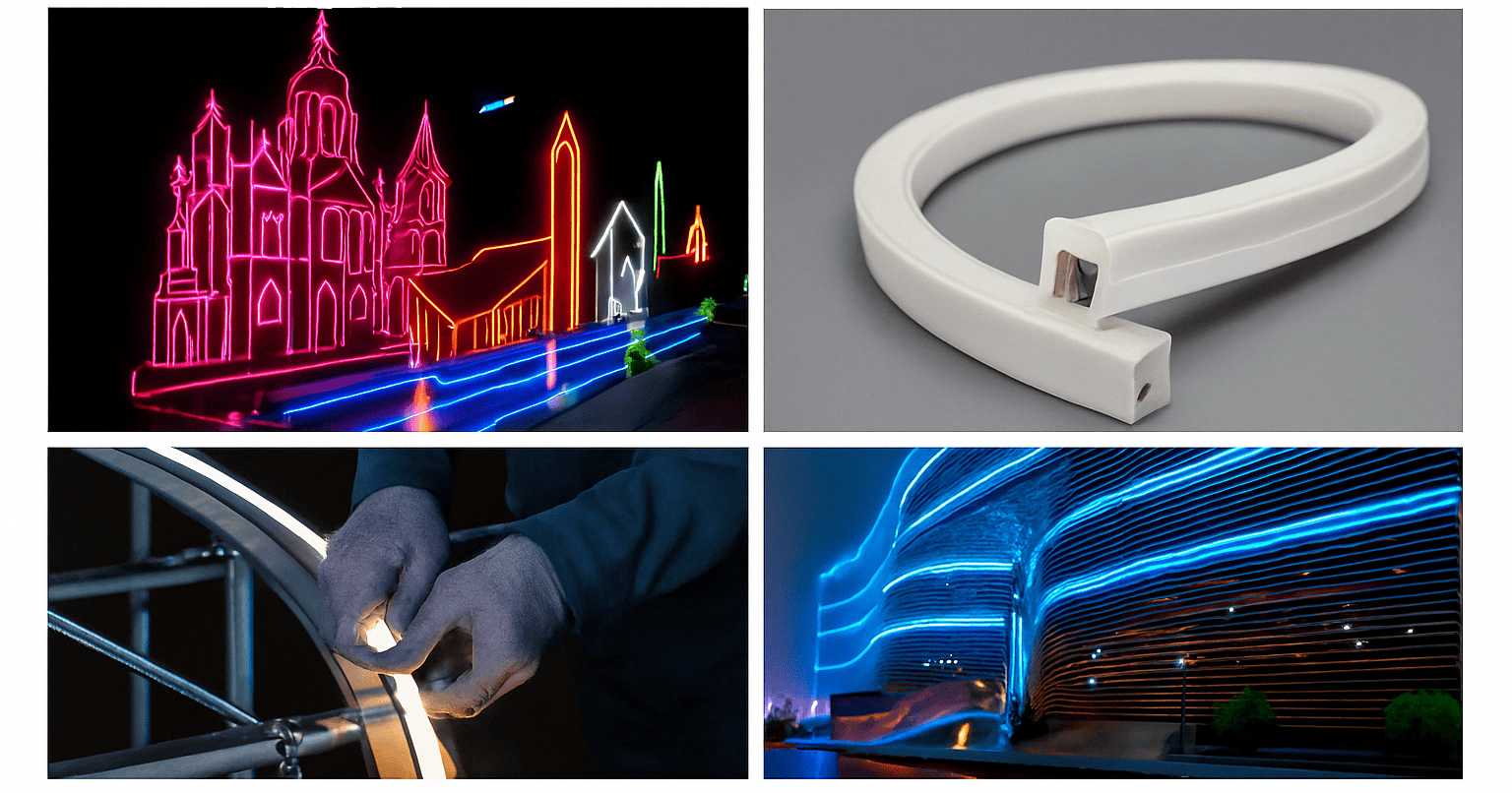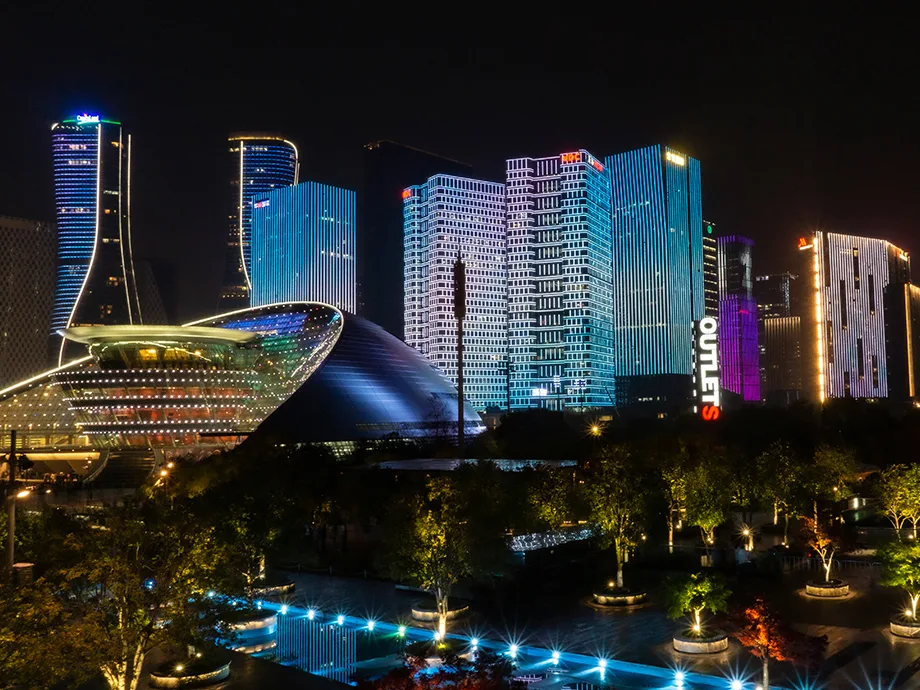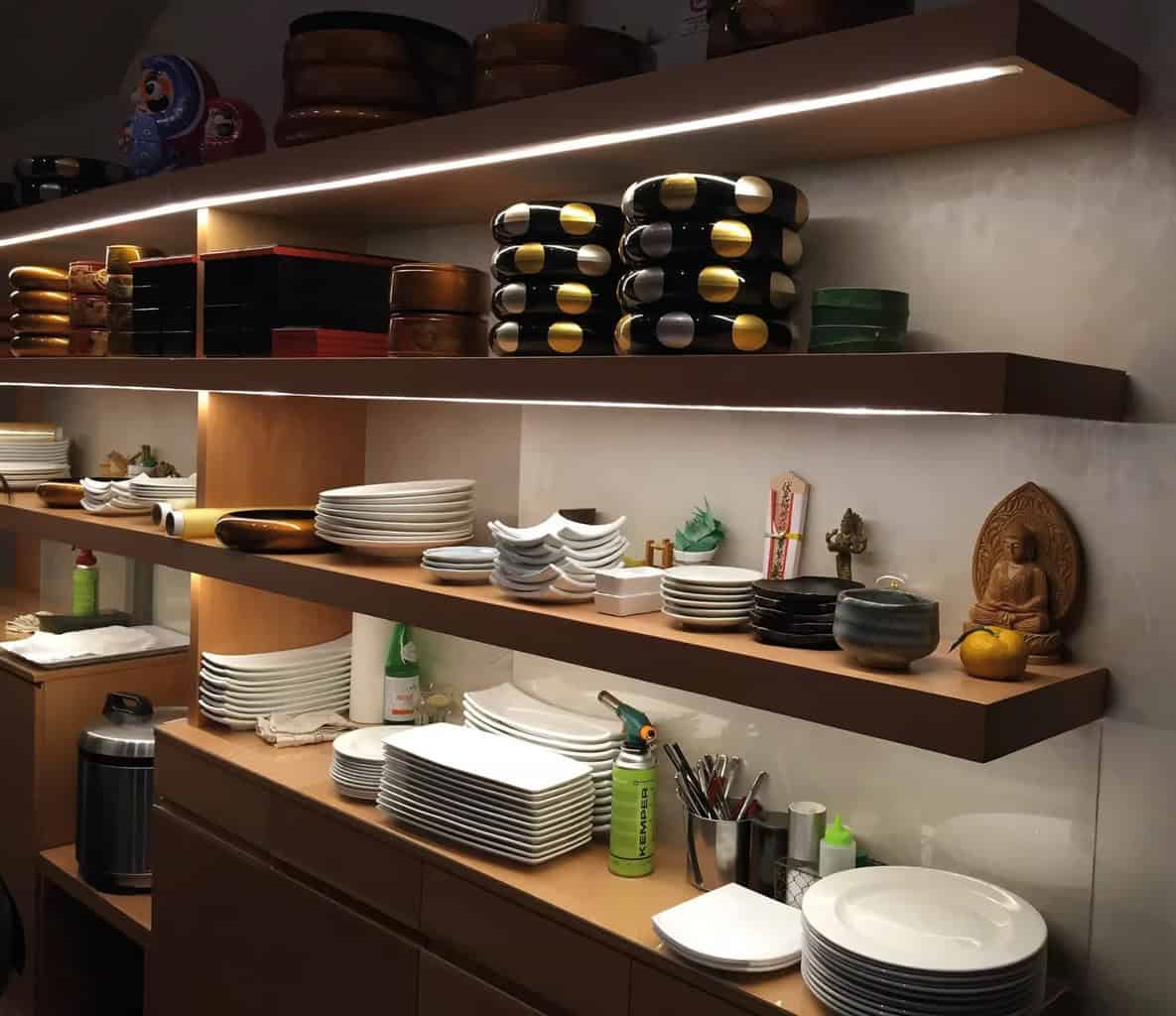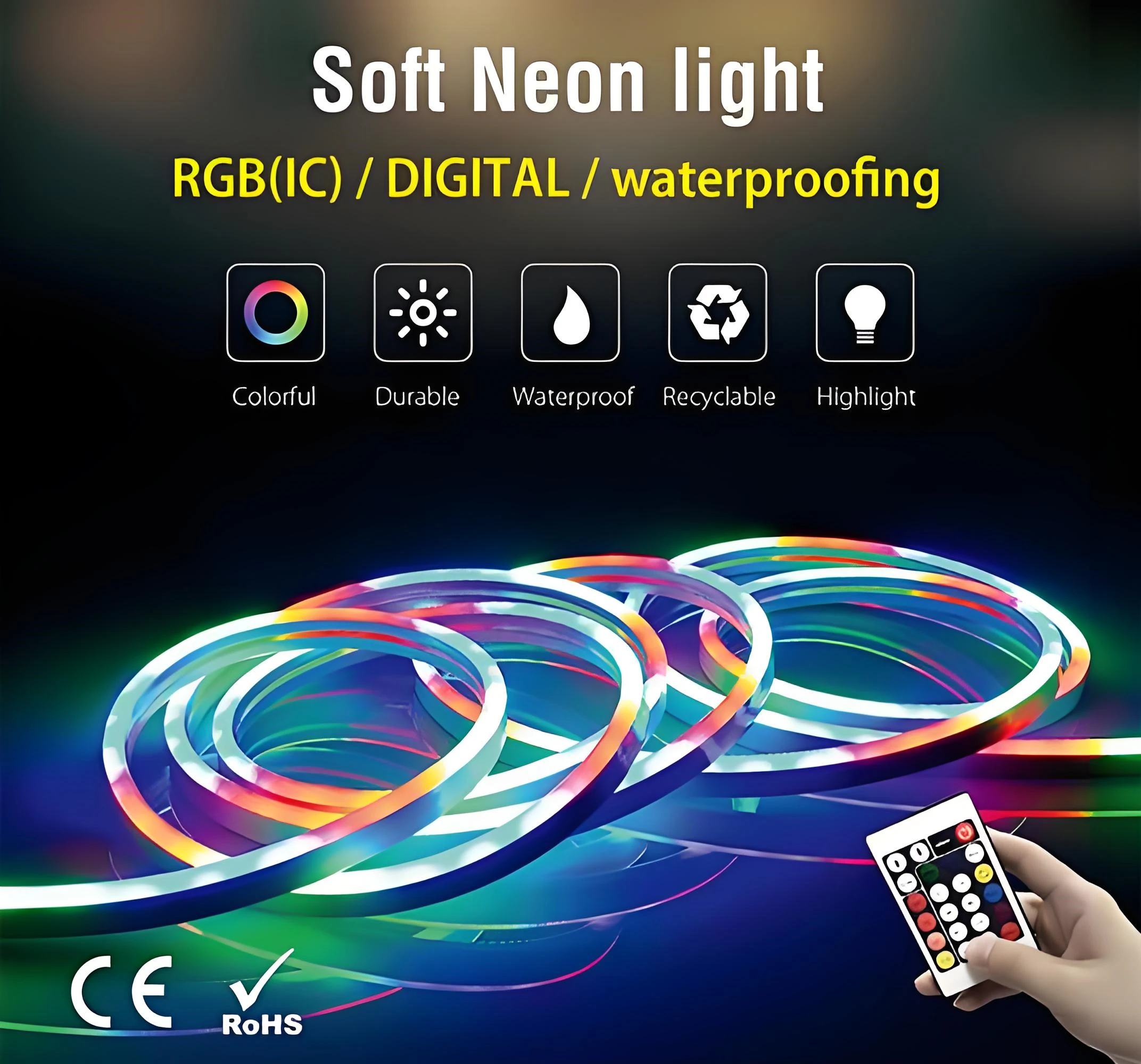Do LED lights have ultraviolet light?
Are the LED lights we often use harmful to the human body? This is a matter of common concern. A light-emitting diode (LED) is a semiconductor device that emits light radiation when an electric current passes through it. Most leds emit a very narrow wavelength range, from infrared (wavelength about 1000 nm) to ultraviolet (about 300 nm).
Used as lighting led lights basically no ultraviolet light, the radiation is very small, led light mechanism and fluorescent lamps are different, white led is through the led blue chip to produce a fixed frequency of blue light irradiation special phosphors emit white light, So there is no need to worry about UV radiation, unless you buy a UV led lamp.
LED lights emit optical radiation that could only, in certain circumstances, potentially damage the eyes and skin, depending on several variables that have to be taken into account. These variables include the spectrum (or wavelength distribution) of the LED light source, the intensity of the lighting (especially in the blue-band), the duration of exposure, the health of the eye, and how someone is looking at the LEDs—staring at them without blinking or actively moving the eyes, and looking at them straight-on or in their peripheral vision.
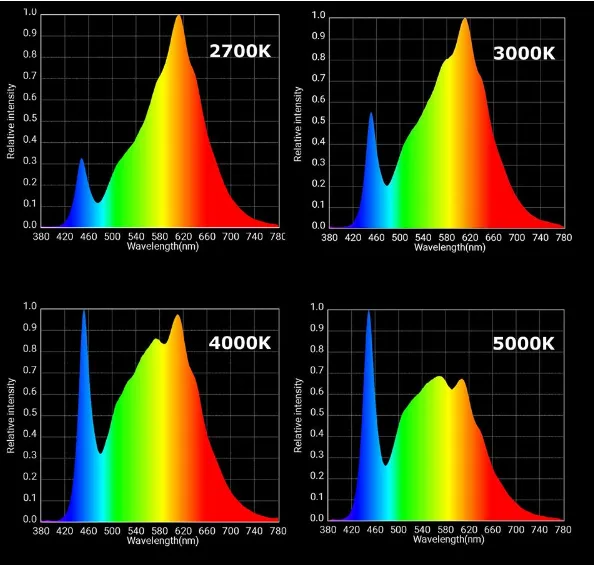
Understanding Ultraviolet Ray
What Is Ultraviolet Light?
Everyone is exposed to ultraviolet radiation from the sun, and more and more people are exposed to artificial light sources used in industry, commerce, and recreation. The Sun is by far the strongest source of ultraviolet radiation in our environment. Solar radiation includes visible light, thermal radiation and ultraviolet radiation. Just as visible light is made up of different colors that are evident in a rainbow, the ultraviolet radiation spectrum is divided into three regions called UVA, UVB, and UVC. As sunlight passes through the atmosphere, all of the UVC and most of the UVB is absorbed by ozone, water vapor, oxygen and carbon dioxide. Uva rays are not filtered by the atmosphere.
Ultraviolet light is a type of electromagnetic radiation that makes black-light posters glow, and is responsible for summer tans — and sunburns. However, too much exposure to UV radiation is damaging to living tissue.
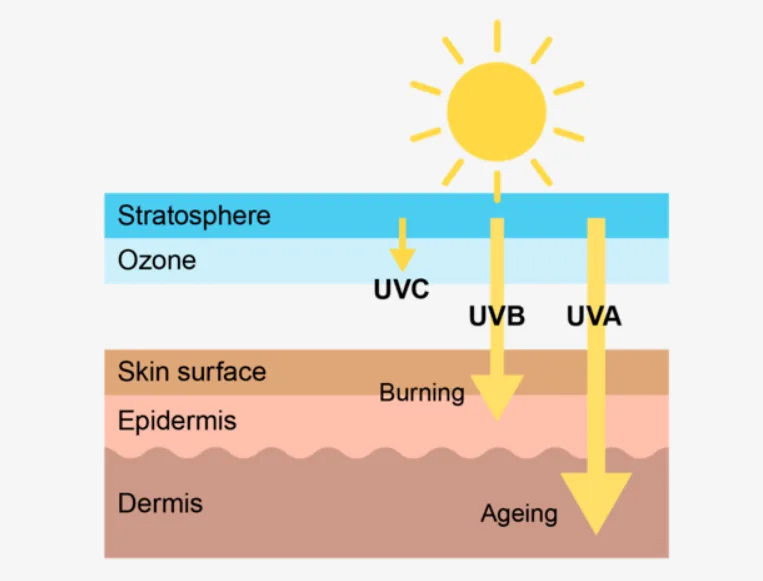
Types of UV Rays
There are three main types of ultraviolet light. Two of these types can damage our skin and cause skin cancer:
UVB reaches the outer layer of the skin (epidermis) and causes most sunburns.
UVA can penetrate deep into the inner layer of the skin (dermis). It causes skin aging, but has less effect on sunburn.
There is a third type of ultraviolet light, called UVC, but it is completely blocked by the ozone layer and cannot reach the Earth’s surface.
UVA: UVA rays have longer wavelengths and are the least energetic type of UV radiation. They are often associated with tanning beds and blacklights. While excessive UVA exposure can lead to skin aging and potential DNA damage, they are generally considered less harmful than UVB and UVC rays.
UVB: UVB rays have medium wavelengths and are more energetic than UVA rays. They are responsible for causing sunburn and can contribute to skin cancer development with prolonged exposure.
UVC: UVC rays have the shortest wavelengths and are the most energetic. They are highly effective at killing microorganisms and are often used for disinfection. However, UVC rays from the sun are blocked by the Earth’s atmosphere and do not reach us.
Understanding Radiation
Radiation is energy that moves from one place to another in the form of waves or particles. We are exposed to radiation in our daily lives. Some of the most familiar sources of radiation include the sun, the microwave oven in the kitchen, and the radio we listen to in the car. Most radiation is not harmful to our health. In general, the risk of low doses of radiation is low, but the risk of high doses is high.
In fact visible ‘light’ is a form of radiation, which can be defined as an energy that travels in the form of electromagnetic waves. It can also be described as a flow of particle-like ‘wave-packets’, called photons, that travel constantly at the speed of light (about 300 000 kilometres per second).
Although the human eye cannot see ultraviolet (UV) radiation, it can cause some materials to fluoresce—that is, to generate electromagnetic radiation with lower energy, like visible light—when it hits them. Atomic excitation in a gaseous discharge tube produces discrete ultraviolet radiation and continuous ultraviolet radiation from high-temperature surfaces like the sun. Most UV rays from sunlight are absorbed by oxygen in the atmosphere, creating the lower stratospheric ozone layer. Nearly 99 percent of the ultraviolet energy that reaches the earth’s surface is UVA radiation.
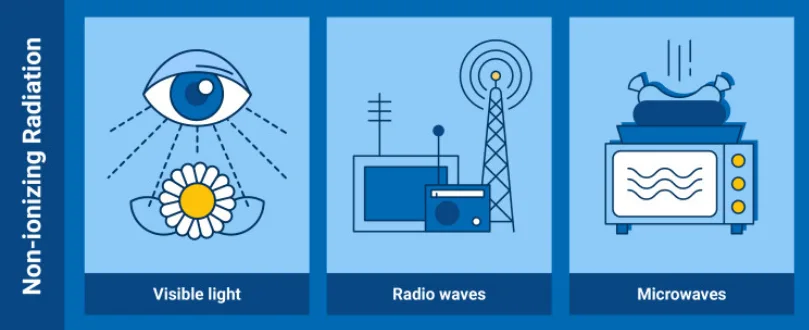
Do LEDs Produce UV and Radiation?
It is observed that UV radiation causes sunburn and, in more extreme cases, can result in vision problems, skin cancer, immune system deterioration, and other diseases. Fortunately, UV emissions from most artificial light sources are insufficient to justify any significant alarm. The UV that CFL bulbs emit is being investigated in addition to their mercury content. Even though CFLs don’t emit a lot of UV, some people who are particularly sensitive to UV might be negatively impacted by it. Color deterioration in UV emission is another issue.
Due to UV emissions, CFL and HID bulbs have been known to harm curtains, carpets, painted surfaces, and more. This has served as an additional incentive for places like museums to upgrade to LED lighting. Given the low UV intensity of LED, it is understandable why LED tanning lights are not readily available in the United States. Making them effective, long-lasting, and affordable is the problem, not so much that it cannot be done.
Yes, they produce a lot of radiation from visible light sources that appear white to our eyes.
Since it does not fall into the X-ray or gamma regions of the electromagnetic spectrum, it is not ionizing and hence not hazardous until it reaches a concentration that can operate as a laser and set objects on fire. As implied by its name, ionizing radiation produces ions. This harms your body because it frequently triggers unintended chemical reactions inside the nucleus of your cells. However, it is safe since LED lighting does not fall under this wavelength.
Are there any safety standards for LED lights and UV emissions?
Yes, there are safety standards and guidelines for UV emissions from LED lights. Organizations such as the American Conference of Governmental Industrial Hygienists (ACGIH) establish exposure limits to ensure that LED lights meet safety requirements and do not risk human health.
What Types of Lamps Emit UV Light?

Now people rely on the light at night is the lamp, the night scene is also relying on the lamp to set off the beauty of a city at night, through different colors, different shapes, different sizes outline a breathtaking night scene. So these led lights have ultraviolet light, above we have discussed that these lights are ultraviolet light is not strong, basically will not cause harm to the human body. So which LED lights will have ultraviolet light? Where will the lights be used? Let’s find out.
Uv leds generally refer to leds with a luminous center wavelength below 400nm, but sometimes they are called near-ultraviolet leds when the luminous wavelength is greater than 380nm, and deep ultraviolet leds when they are shorter than 300nm.
The various colors of light emitted by our normally visible LED lights, the wavelength of the light is between 500-780nm, and this part of the light has less ultraviolet light. LED lights with a wavelength of 100-400nm will contain different levels of ultraviolet light. Therefore, the LED lights in this range belong to ultraviolet lamps, which are divided into the following table:
| Category | Colour | Wavewlength(nm) |
| Ultraviolet wavelength | UVC | 100-280 |
| UVB | 280-315 | |
| UVA | 315-400 | |
| Used as a lighting class light | Violet | 450 and down |
| Blue | 450-480 | |
| Blue Green | 480-510 | |
| Green | 510-550 | |
| Yellow | 570-590 | |
| Orange | 590-630 | |
| Red | 630 and UP |
Due to the high sterilization effect of short-wavelength light, UV LED is often used in refrigerators and household appliances, such as sterilization and deodorization.
The UV of some led lights is very useful, such as killing bacteria on the operating table and giving people a sterile operating environment.
The Advantages of LED Lighting

LED is a more advanced cold light source; it is not like incandescent lamps, fluorescent lamps emit a lot of infrared and ultraviolet light. LED light festival efficiency, long life, environmental protection, excellent light quality, fast response, adjustable, safe voltage, shock and vibration resistance, strong direction, low temperature operation, and other advantages make it the mainstream choice of modern lighting, widely used in various fields.
The advantages of LED lights are mainly reflected in the following aspects:
1. Energy-saving and efficient
LED lights are more energy efficient than traditional lighting such as incandescent and fluorescent lamps, often saving more than 50% of electricity consumption. They are more efficient at converting electrical energy into light energy, meaning they consume less power at the same brightness.
2. Sturdy and durable
The LED chip is completely encased in epoxy resin. The small epoxy resin particles are extremely difficult to break, and there is no loose part in the whole lamp body; There is also little thermal effect and may volatilize, fuse. These characteristics make leds difficult to damage. Compared to ordinary light bulbs, fluorescent lamps, LED lights are more durable.
3. Long life
Under the appropriate current and voltage, the service life of LED can reach 100,000 hours, that is, the theoretical product life reaches more than 10 years, and it is the only longevity star in the field of lighting.
4. Safe low voltage
Leds use low-voltage DC power (alternating current can be rectified into direct current), and the supply voltage is between 6 and 24V, which varies depending on the product. In short, it uses DC power which is safer than high voltage power supply, especially suitable for home and public places.
5. Variable appearance
Due to its small size, each unit LED chip is 3~5mm square or round, so it is more suitable for the preparation of devices with complex modeling processes. For example, the manufacture of soft lamp belts, flexible neon lights, shaped lights and various craft modeling.
6. Color diversity
The color of the former lamps is very single, in order to achieve the purpose of color, one is to brush paint or cover the colored sheet on the surface of the lamps, and the other is to fill the inert gas in the lamps to emit light, so the richness of color is limited. LED is a digital control, light chip can currently emit a variety of colors, including red, green, blue ternary color, it is with this ternary color, through the system control, you can restore the colorful world.
7. Low heat dissipation
LED is a more advanced cold light source, it is not like incandescent lamps, fluorescent lamps as radiation a lot of infrared and ultraviolet light, especially suitable for cultural relics, pearl jewelry, high-end cosmetics and other valuables lighting. There is almost no incandescent current thermal effect, will not be affected by thermal expansion and contraction and burst. The long-term use of light bulbs does not yellow, and will not have a greenhouse effect on the environment due to large heat.
8. Enhances environmental performance
I. No harm from metallic mercury. LED lights do not use high-hazard mercury like fluorescent lamps, and there will be no public hazards such as mercury ions and phosphors that may leak during the manufacturing process of the bulb or after it is damaged.
II. LED epoxy resin is an organic polymer compound, after curing has good physical and chemical properties, high bonding strength for wafers and metals, hard and flexible, stable to salt and most solvents, not easy to damage, even if damaged or aging can also be recycled and reused, will not pollute the environment.
III. The particle layout of LED lamps and display screens, the light generated is generally scattered, and rarely produces light pollution.
9. Cost saving
Compared with incandescent lamps, the purchase price of fluorescent lamps and LED lamps is higher. However, because the energy consumption of LED is particularly low and the service life is long, it can save a lot of electricity in the long run, and it can save the investment of replacing lamps, so the comprehensive use cost is cheaper
LED lights emit a small amount of UVA, which can contribute to skin aging with prolonged and close exposure, similar to sunlight. However, the UVA emitted by LED lights is significantly lower than what you would experience outdoors, and the risk of skin damage from LED lights is minimal.
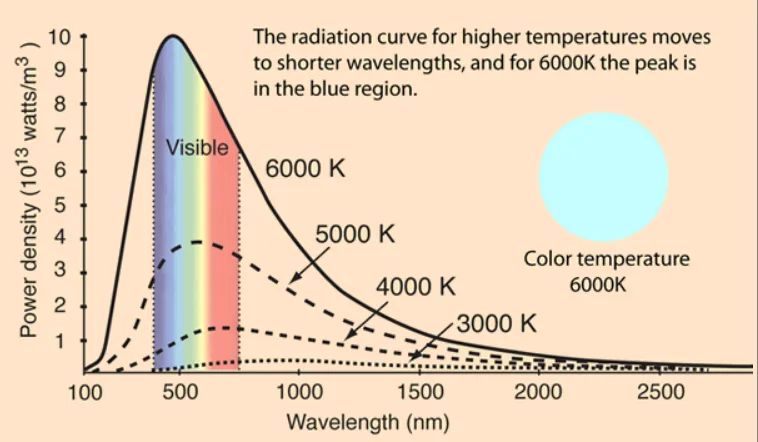
Conclusion
In the grand scheme of lighting technology, UV emission from LED lights is a minor concern for human health and the environment. The UV rays emitted by LEDs are primarily in the UVA range and are generally considered safe for regular use. Manufacturers take precautions to minimize UV emissions, and regulatory standards help ensure the safety of LED lighting products. As LED technology continues to evolve, it’s essential to stay informed about potential advancements and safety measures, ensuring that we can enjoy the benefits of efficient and sustainable lighting.
Signliteled is a professional manufacturer of high-quality LED lamps, a professional team with more than 13 years of production experience, producing lamps that meet the certification of various countries. All our products go through strict inspection to ensure product quality. In addition, we offer customizable options such as some art-shaped LED bars and neon lights. If you have product needs or technical support, please contact SIGNLITELED.
